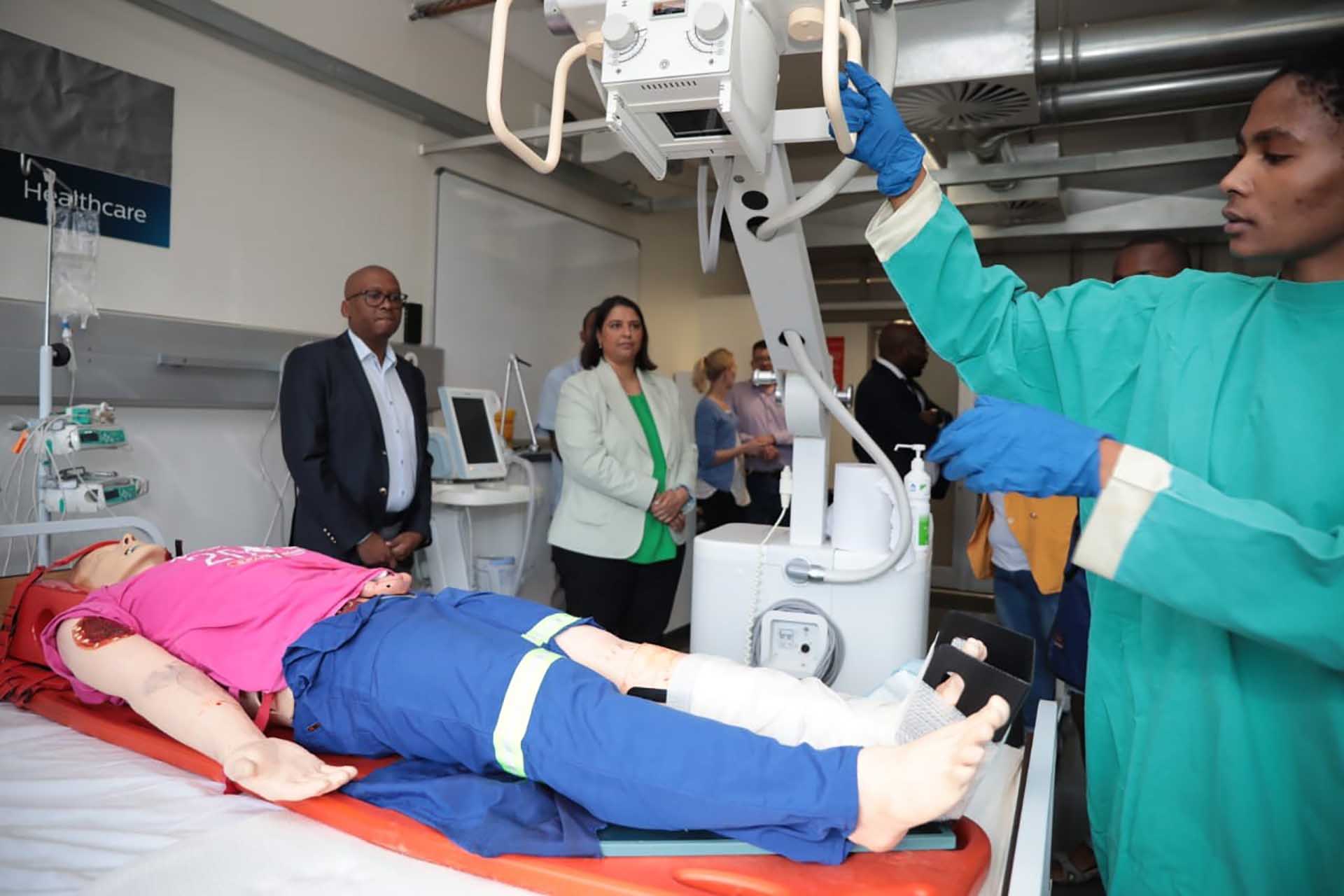The reintegration of students to clinical training during COVID -19
At the start of 2020, although the SARS-CoV-2 outbreak generally attracted more media attention during its early stages than other infectious agent outbreaks, very few people imagined that it would have had such a dramatic impact on daily living. The impact of the virus reached all aspects society, including higher education. At the end of March, the President declared a hard lockdown in response to the growing numbers of infections and also to allow for a period of preparation for a surge in numbers in the healthcare sector. This lockdown included the closure of all areas where social gatherings took place non-essential businesses and education institutions. Considering this call, the University of Johannesburg (UJ) acted swiftly and ceased all academic and administrative activities. However, it became clear that although most activities could be halted, creative, sustainable ways needed to be found to ensure that, to some extent academic activities could be restarted.

As part of many programmes offered by the Faculty of Health Sciences (FHS) at the UJ, students are required to undertake clinical learning as part of the curriculum. In most instances, the clinical learning is a mandatory component of the curriculum and monitored by various professional boards and regulatory councils. This learning occurs in a range of clinical environments where in certain instances non-urgent and elective interventions occur, through to instances where urgent and time-sensitive interventions occur. It was in this context that the FHS had to carefully determine which students return to a level of normal academic activities to allow clinical learning to resume. At the time, the Department of Higher Education and Training (DHET), further allowed universities to decide which students should return to resume practical and clinical learning activities. These activities were considered essential and could not be replaced by emergency remote teaching and learning.
In determining the “essential” nature of certain activities, it goes without saying that an adequate risk-assessment needed to take place. During this risk-assessment, it became clear that the essential activities were associated with the highest risk. These included activities performed by emergency care and nursing students. Based on where these two groups of students would perform their clinical learning, it was evident that their chance of treating and engaging with COVID-19 positive patients was high. It then became important for the FHS to engage different clinical learning partners to ensure that they were comfortable and prepared to accommodate students in these environments. During this engagement, the reality of operational challenges in securing the safety of staff led to the FHS having to carefully consider the reintegration of students into the clinical learning platform. These considerations included a.) limiting the number of students in a particular environment b.) supplying medical grade and appropriate Personal Protective Equipment (PPE) to students and c.) ensuring a support and monitoring network for students engaged in the clinical learning environment.
With regards to these considerations, the role of the Clinical Learning Facilitators within each department became critical. From a senior management perspective, additional funding to provide PPE was made available and additional occupational health/safety staff eagerly supported departments to ensure monitoring networks were in place. Certain departments, like the Department of Emergency Medical Care dedicated a clinical facilitator to student symptom reporting and monitoring to ensure that students were identified and supported in the case of high-risk exposure to COVID-19. One of the difficulties experienced to date, was determining the difference between community exposure of COVID-19 to exposure occurring in the clinical learning environment. Often, unavoidable contact with close family members diagnosed positive with COVID-19 led to isolation procedures being implemented. It became important to remind staff and students to consider all signs, symptoms and possible exposures to COVID-19 and to report these accurately to allow for informed decision-making regarding self-isolation.
Although it is still early in the reintegration phase of most students, it appears as though most essential activities have been able to commence. Although sporadic, community exposure of COVID-19 cases amongst staff and students with subsequent isolation have occurred. Going forward, constant reminders of self-reporting, hygiene practices and social-distancing must be re-emphasised amongst staff and students. As health sciences staff and students, these messages must be practiced and communicated routinely.
